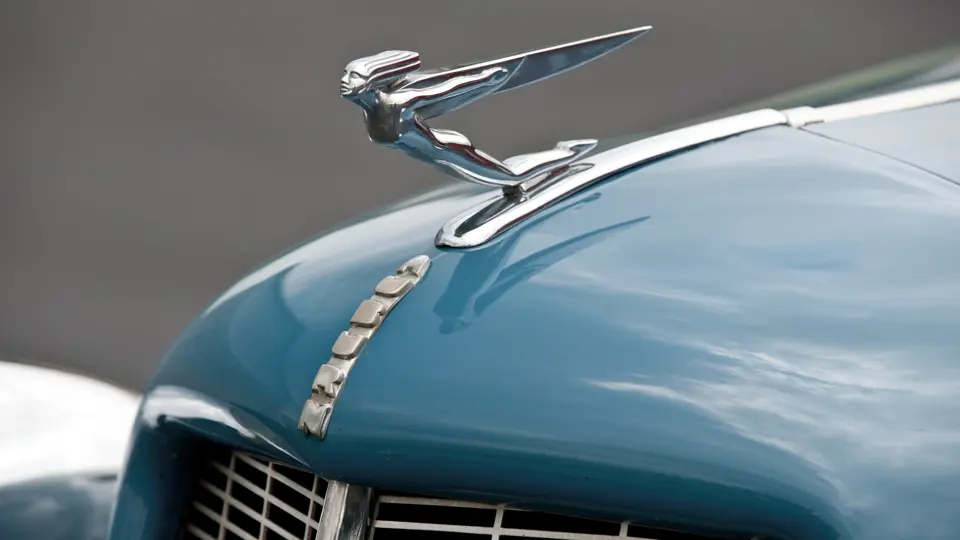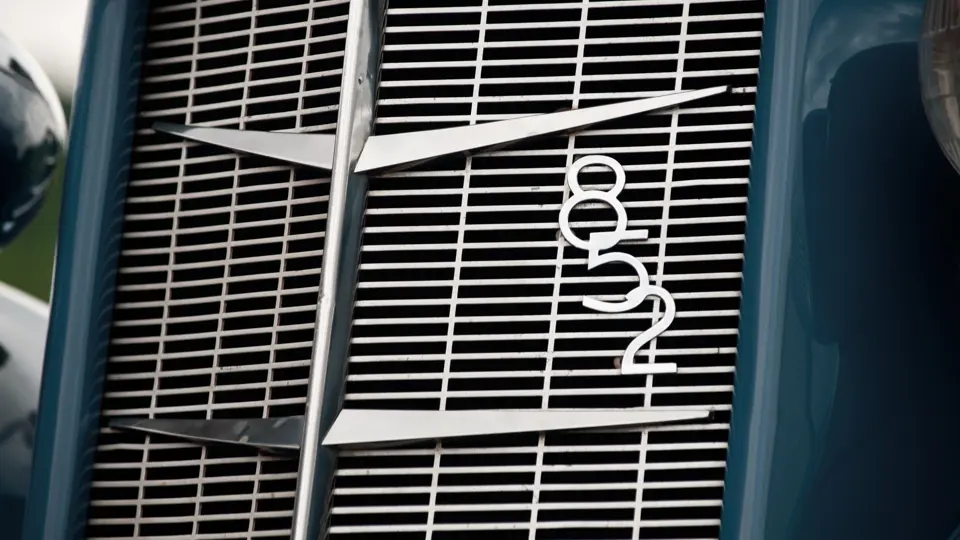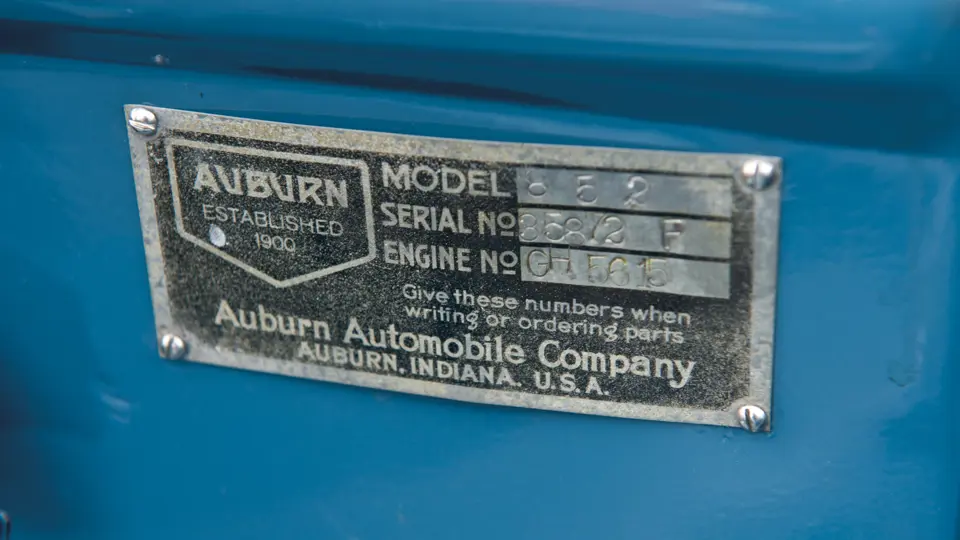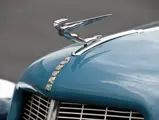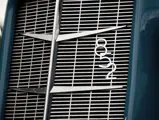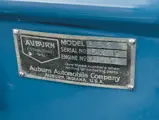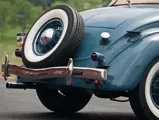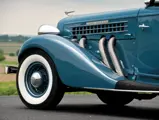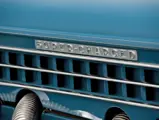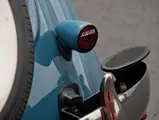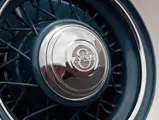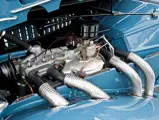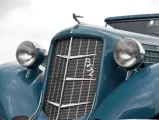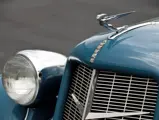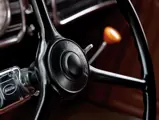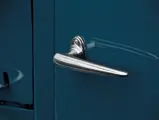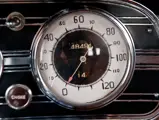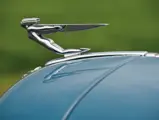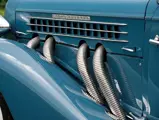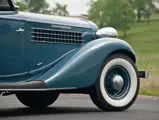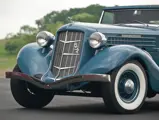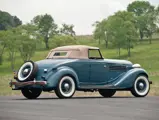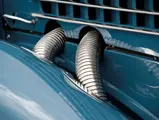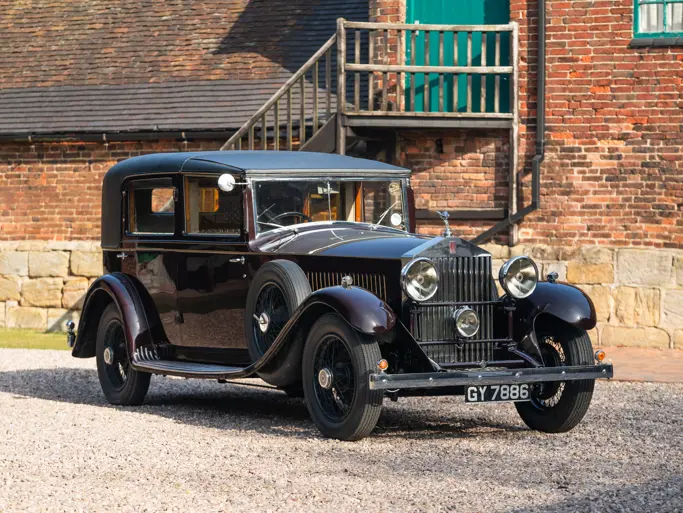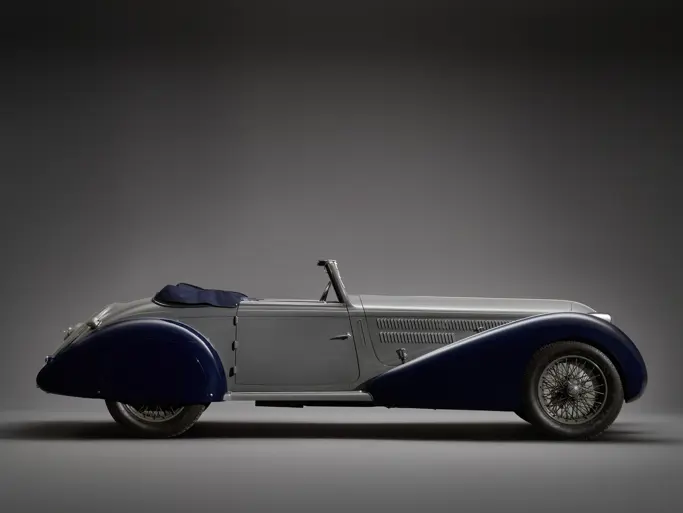150 bhp, 280 cu. in. inline eight-cylinder engine, single two-barrel carburetor, Schwitzer-Cummins centrifugal supercharger, three-speed manual transmission, solid front and rear axles with semi-elliptic leaf springs and Columbia two-speed rear axle, and four-wheel hydraulic drum brakes. Wheelbase: 127 in.
• Iconic styling, elegant yet sporting open body, and a supercharged engine
• CCCA Full Classic status; well-maintained and properly stored
• From the collection of Ray Bowersox
Established in 1903, the Auburn Automobile Company matured into a well-respected builder of reliable cars, but it was not until E.L. Cord assumed the company’s presidency in 1924 that its market stature grew. In fact, as the once-buoyant auto market collapsed following Black Tuesday, Auburn’s sales continued to increase. By 1931, Auburn was the 13th largest American automaker, but the triumph was short-lived, as sales fell drastically in 1932 and 1933.
Respected Auburn designer Al Leamy left Auburn in 1934, saddled with undeserved responsibility for the company’s disappointing sales figures. With few available funds and little time, Gordon Buehrig and his small design staff kept the best elements of Leamy’s 1934 designs. Concentrating on the frontal area, Buehrig’s team skillfully revised the grille and added a pair of handsome “semi-pontoon” front fenders.
Meanwhile, Augie Duesenberg and Pearl Watson adapted the Kurt Beier-designed Schwitzer-Cummins centrifugal supercharger to the Lycoming GG-Series straight eight engine, using an innovative planetary drive system. The resulting supercharged GH-Series engine, rated at 150 hp, became the standard engine for the legendary Boattail Speedster and was available on the 851 line, and later the 852 line, for an additional $220. However, despite great styling, good performance, and bargain pricing, the combined effects of the Great Depression, management turmoil, and E.L. Cord’s complex business affairs led to Auburn’s demise in 1937.
Thankfully collectors have many reminders of Auburn today, exemplified by the 852SC Cabriolet from 1936 offered here. It was under the long-term care of a prominent Texas-based collection until 2004, where it received careful maintenance and proper storage, and the next owner enjoyed the Auburn on classic tours while performing sympathetic maintenance. The distinctive light blue exterior finish was applied by the respected restorers at Stone Barn, of Vienna, New Jersey, and is complemented by a tan convertible top, re-chromed headlamps, and windshield frames. Other exterior features include the signature chrome exhaust pipes, a rear-mounted spare tire, and blue painted wire wheels with chrome-plated hubcaps and new, wide whitewall tires. The interior was restored as well, with new brown leather upholstery.
Mechanical work included a full engine rebuild and the fitting of a new aluminum cylinder head, a rebuilt water pump with modern seals, and a new timing gear cluster, plus the rebuilding of the supercharger, starter, generator, carburetor, and fuel pump. A new clutch was installed, and the suspension was fitted with new kingpins. The engine bay was thoroughly refinished and detailed, displaying correct finishes and components throughout. In October 2008, the Auburn joined the private collection of its fastidious current owner, Mr. Ray Bowersox. Under him, the clutch pressure-plate was adjusted for smooth operation and one of the tie-rod ends was repaired.
This handsome CCCA Full Classic combines strong performance and drivability with beautiful open coachwork. Eligible for participation in the many Auburn-Cord-Duesenberg Club and Classic Car Club of America touring events, its striking styling is sure to turn just as many heads as it did when it was delivered new.
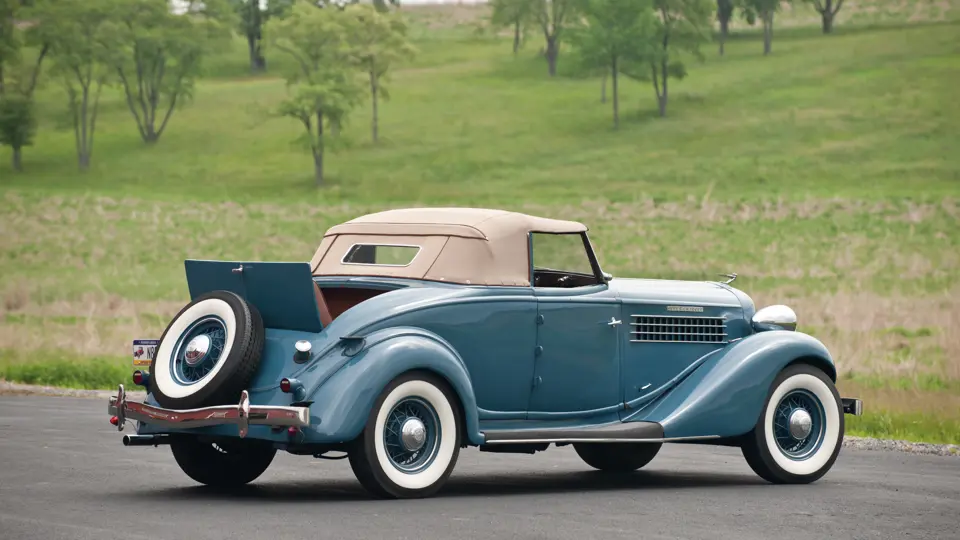

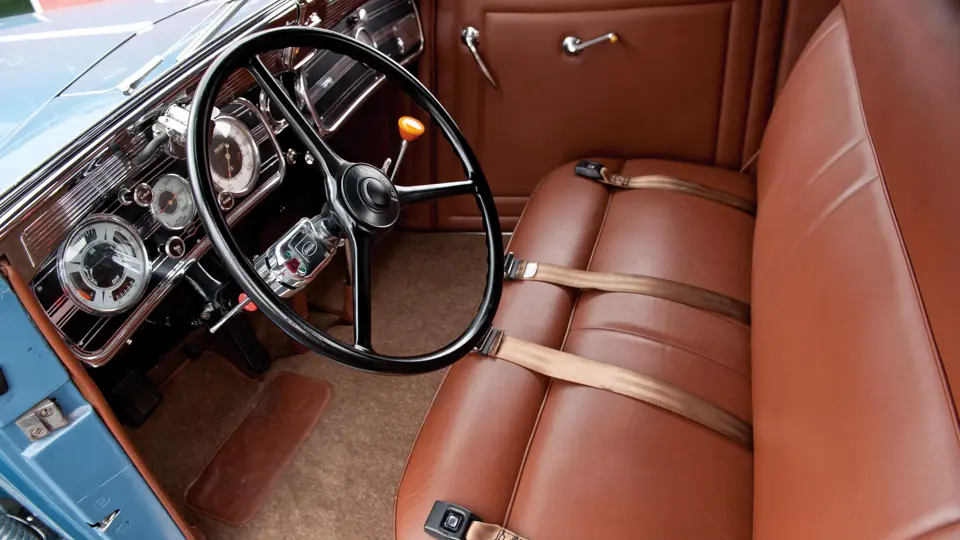

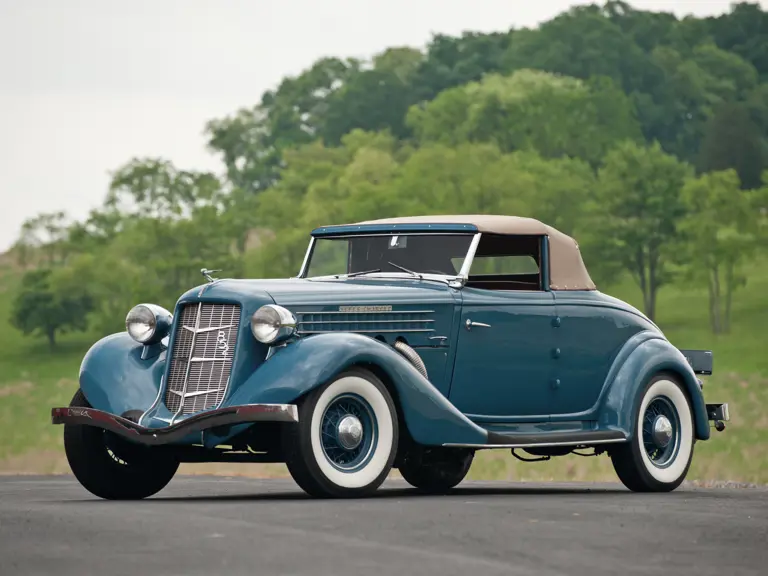

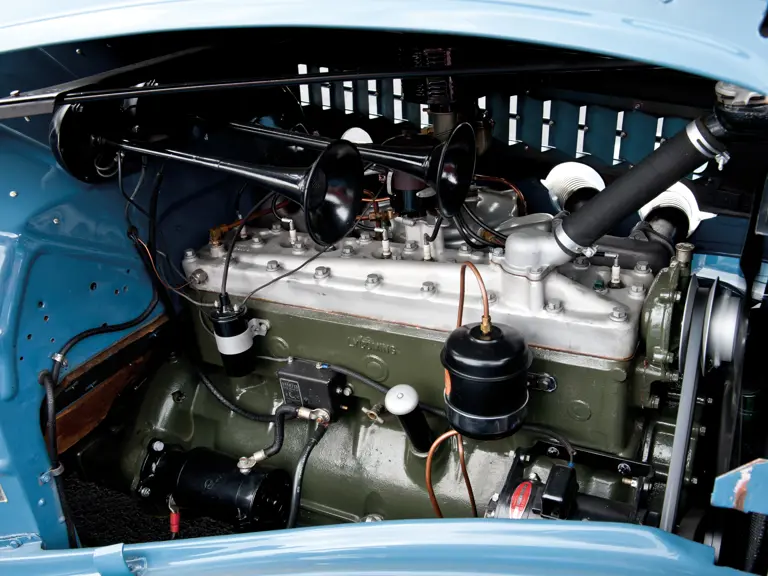
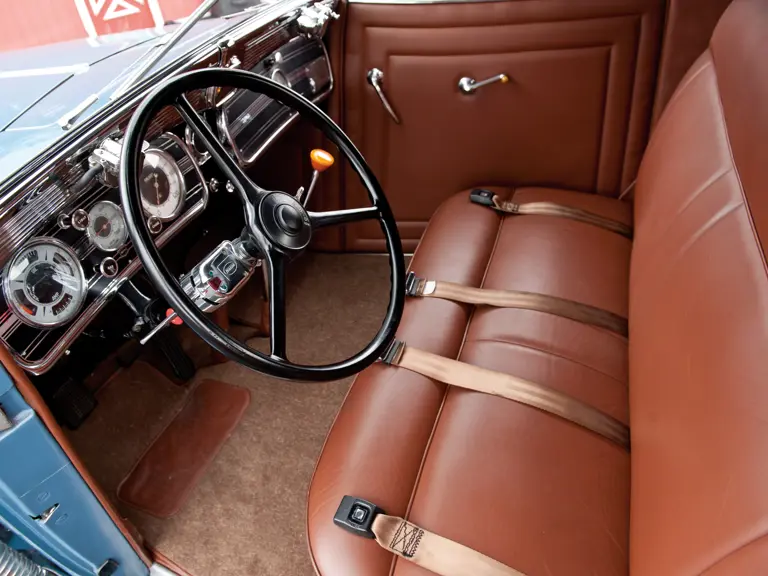
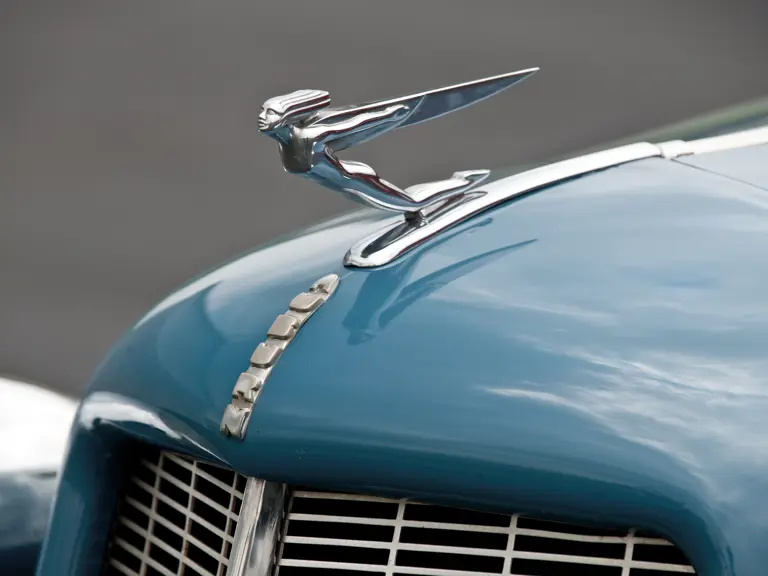

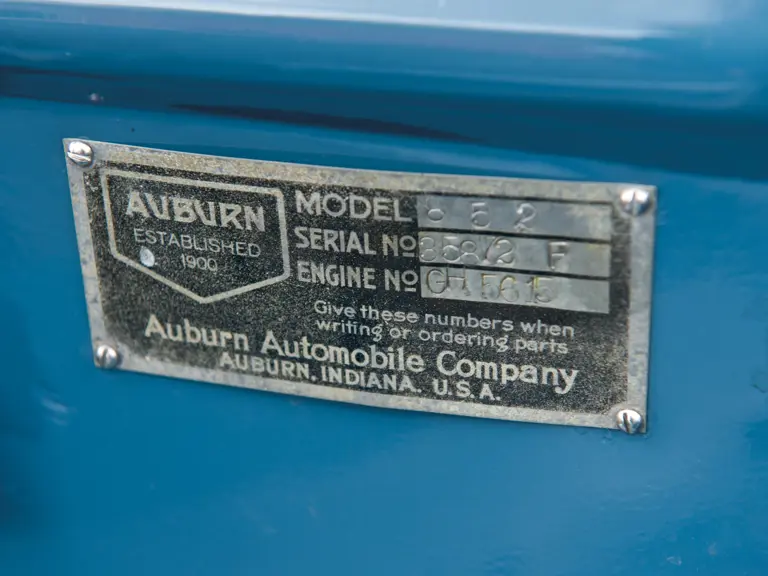
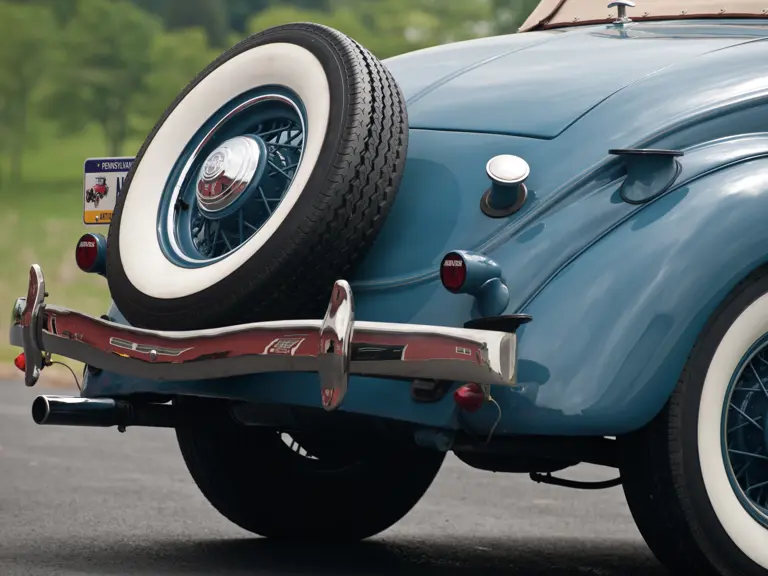


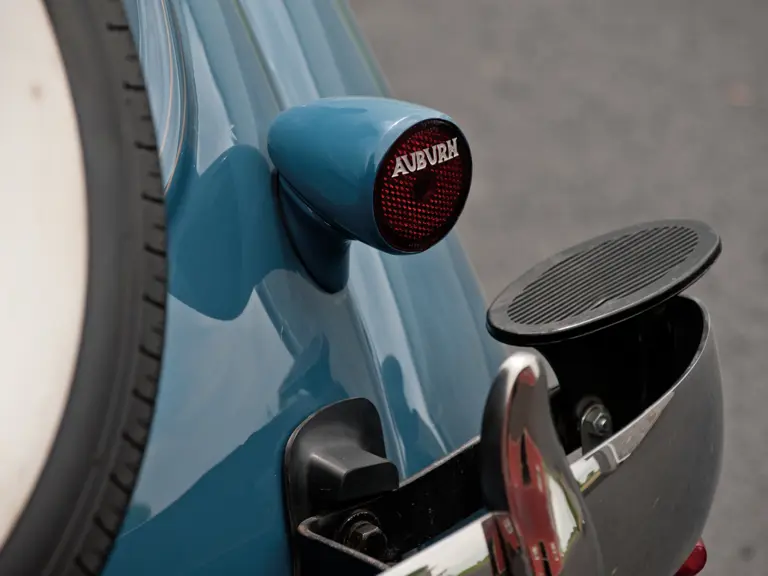
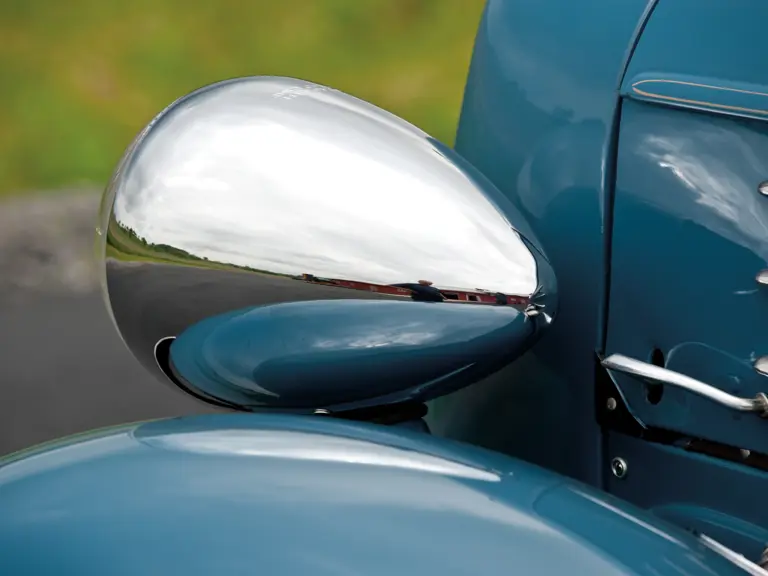
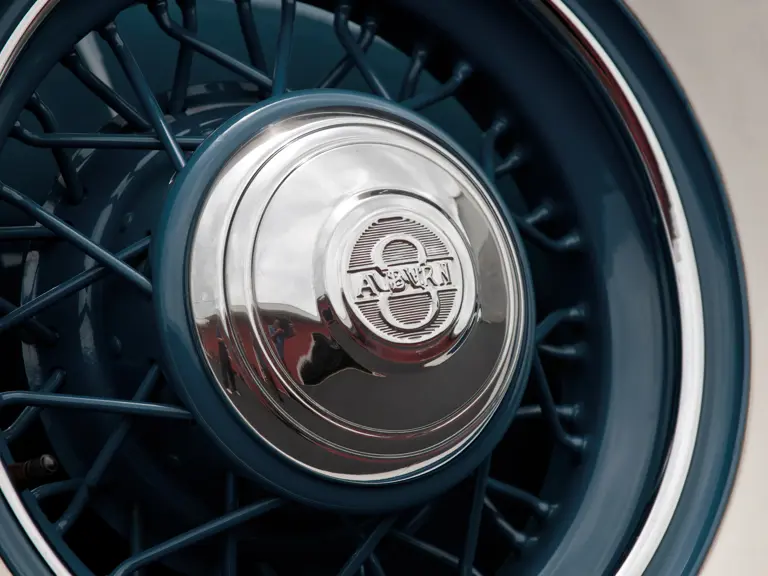
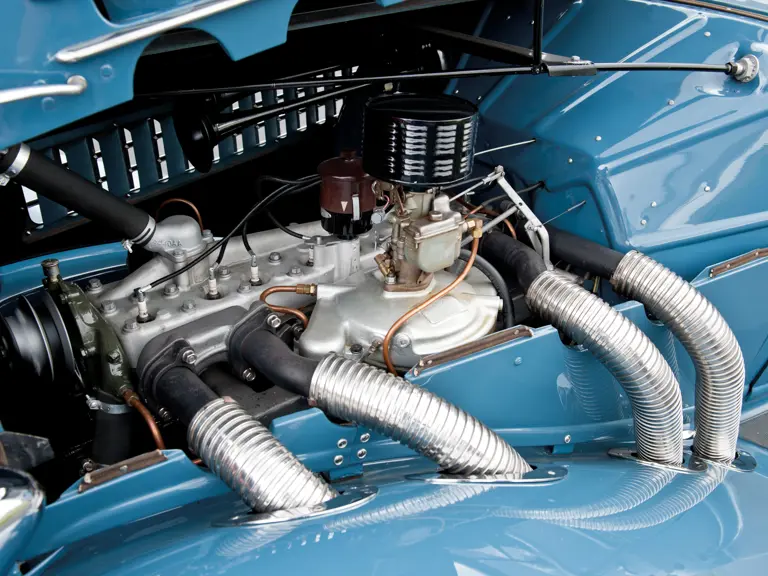

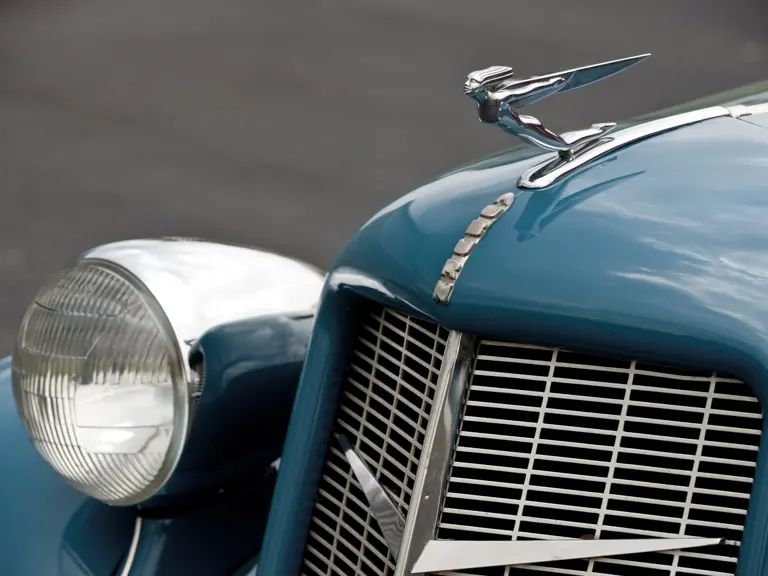
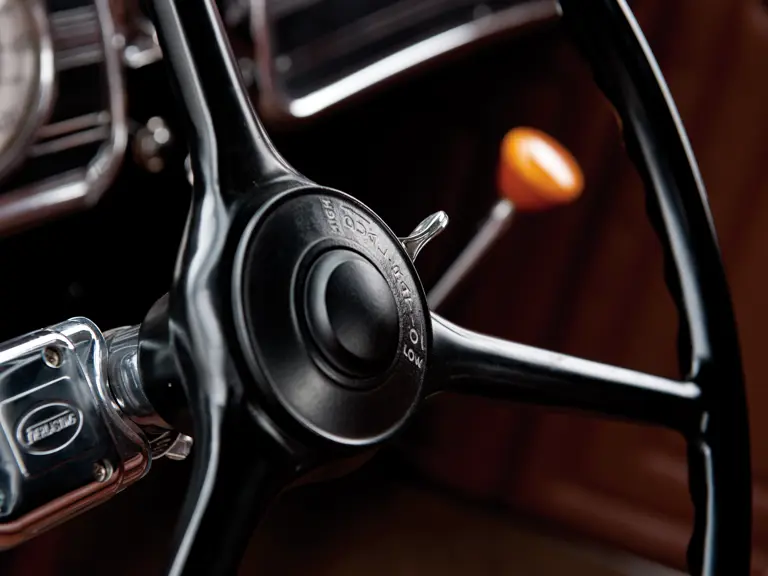
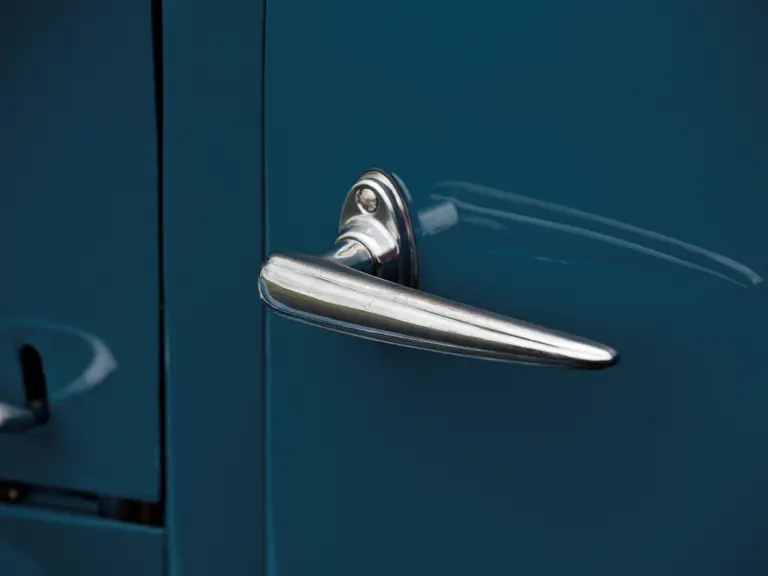
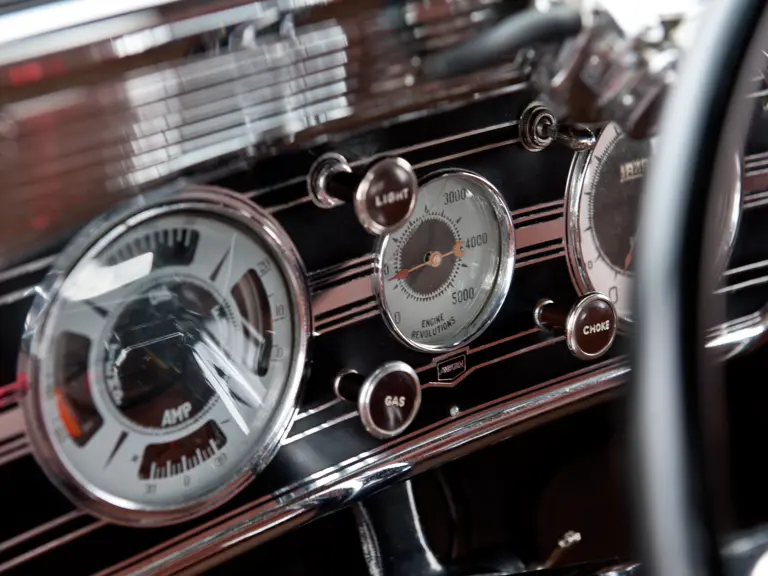
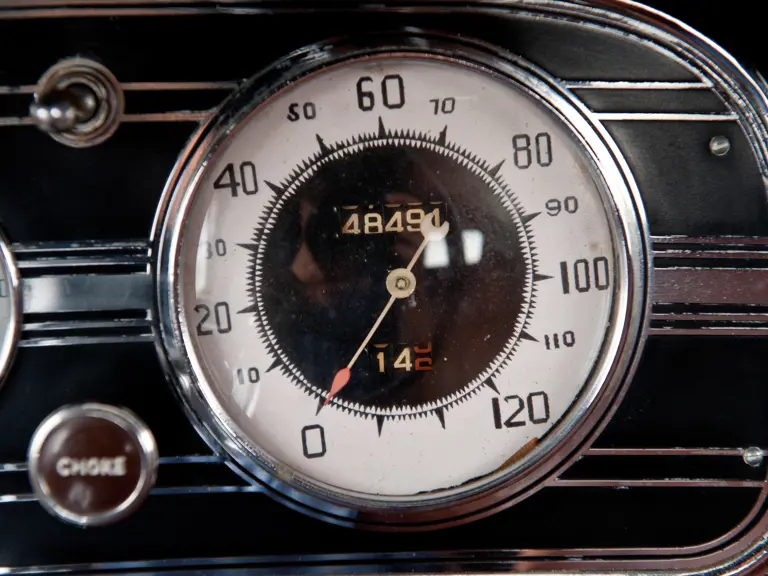
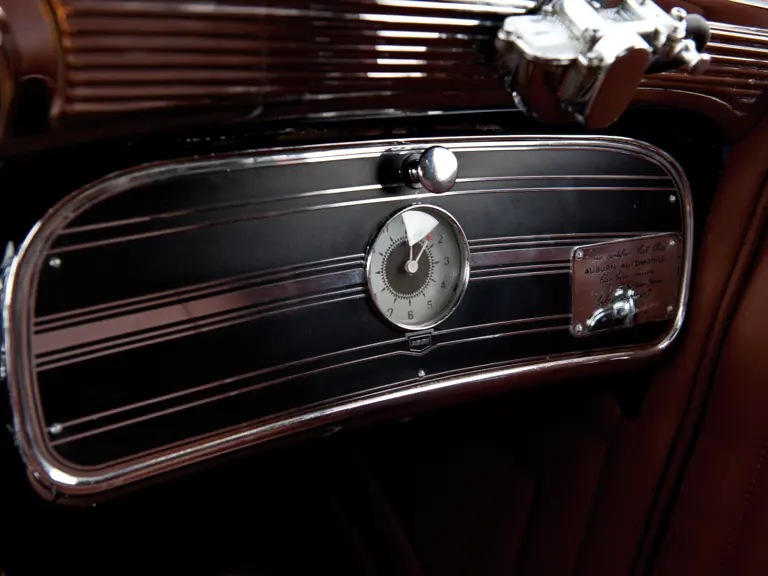
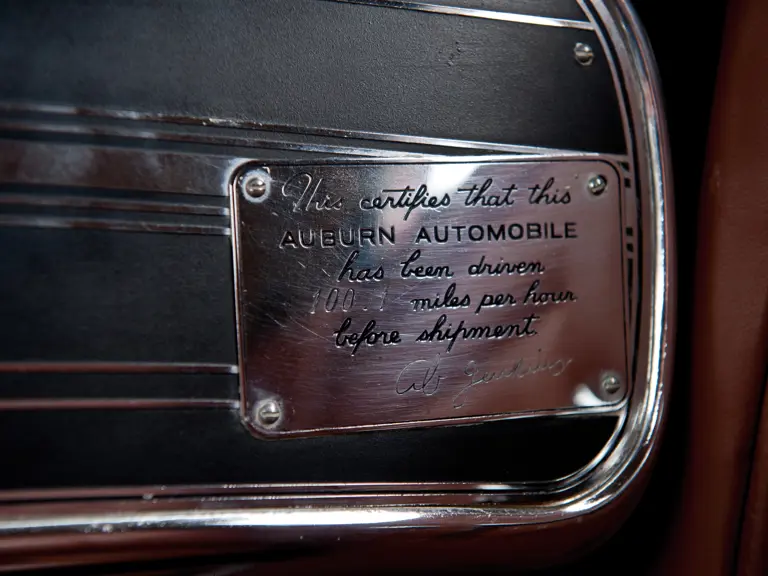
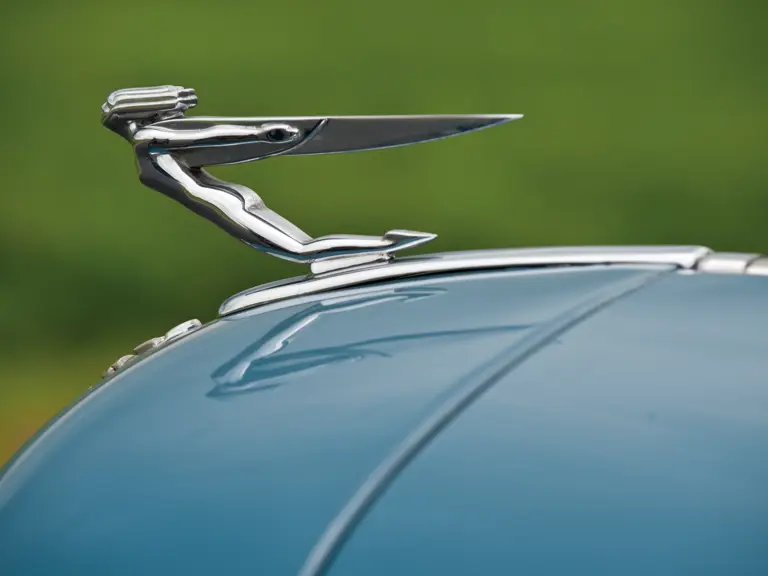
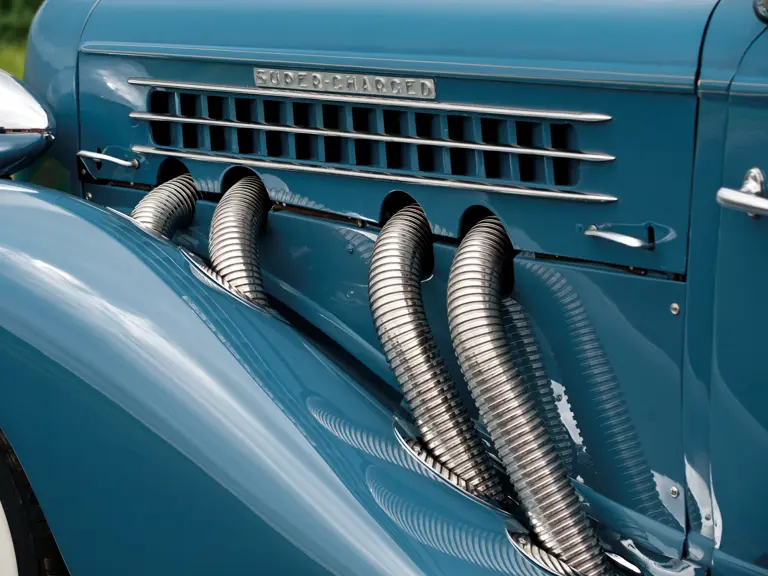
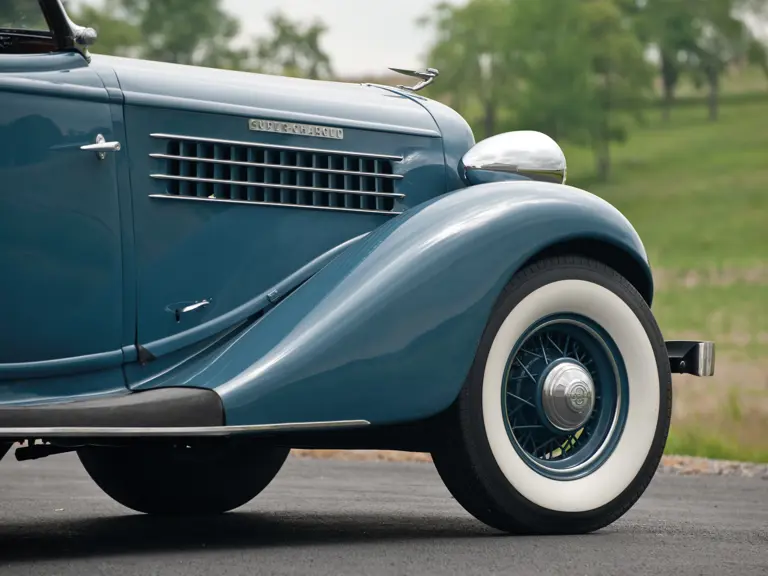
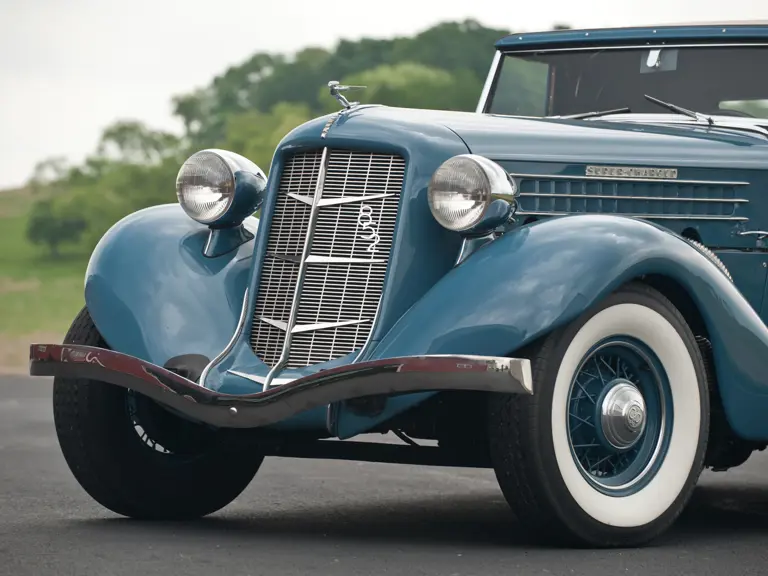
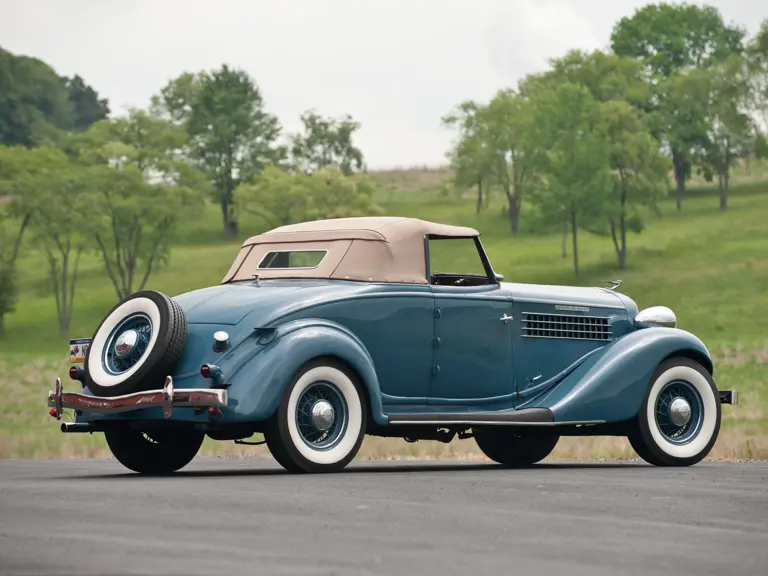
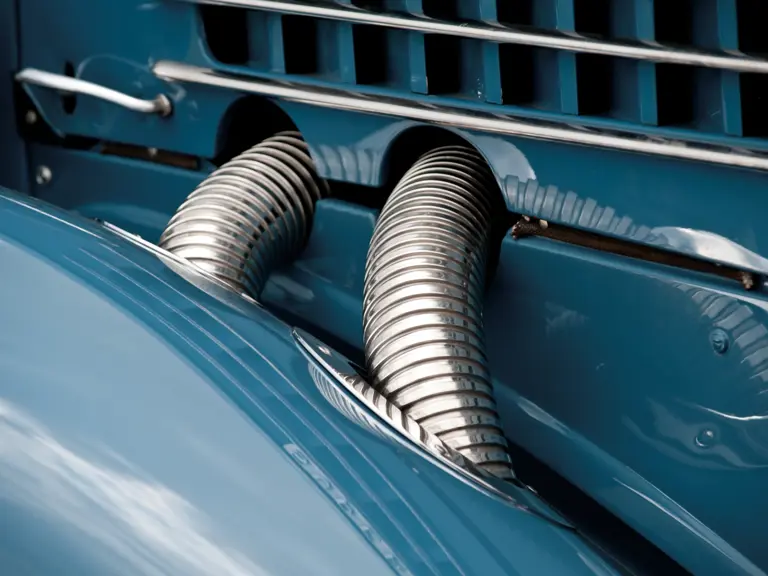

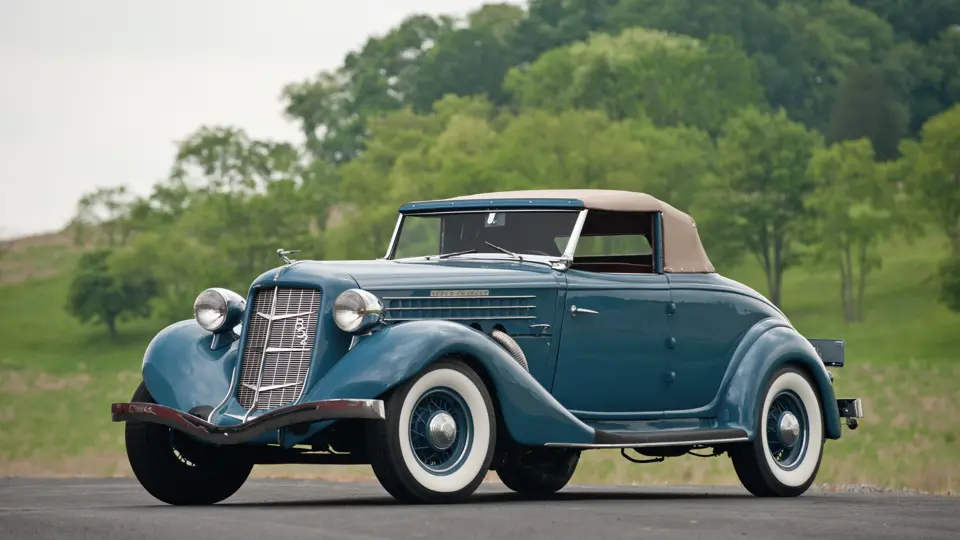
 | Hershey, Pennsylvania
| Hershey, Pennsylvania
